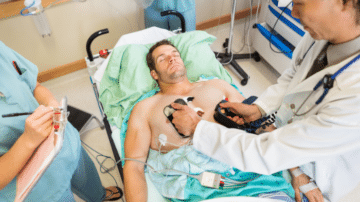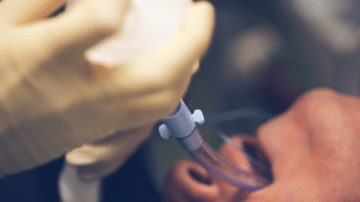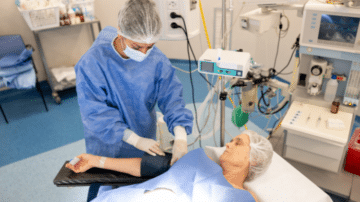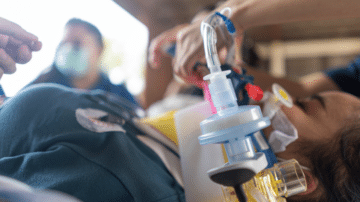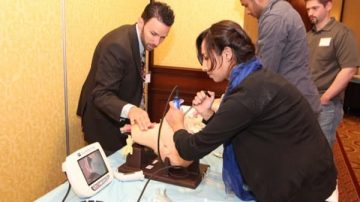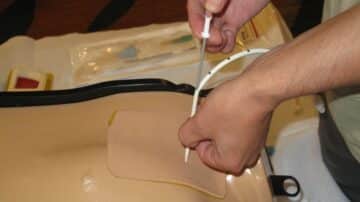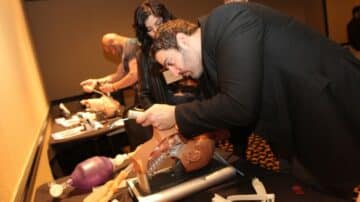Five to 15% of trauma patients arrive in emergency rooms in shock. From June 2020 to April 2022, less than 10% of admitted patients met the criteria for multifactorial shock in the early phase, putting them at a significantly higher…
Read MoreNearly half of adult Americans are obese, putting them at higher risk for several health issues. Should they be admitted for treatment, this patient group is slightly more challenging to intubate than others (11% vs. 7%). The process requires clinicians’…
Read MoreHemodynamic monitoring is used to assess the functional characteristics of the cardiovascular and circulatory systems. In critical care patients, it guides the medical team in preventing or treating organ failure while improving patient outcomes. Though the extent of its benefits…
Read MoreWhich is better for critically ill patients—direct laryngoscopy (DL) of video laryngoscopy (VL)? This question has ignited an intense debate within academic, emergency medicine, and critical care communities as 13 to 20 million intubations are performed annually in the United…
Read MoreMore Tags – Dialysis Catheter
In 2010, 2.6 million individuals received renal replacement therapy. Most of them were also receiving hemodialysis treatments. That number has since grown to 4 million, making knowledge of the procedure vital for healthcare practitioners. Though catheter insertion is an important…
Read MoreMore Tags – Breath Stacking
Mechanical ventilation (MV) is necessary for sustaining life among patients experiencing respiratory failure, cardiopulmonary arrest, severe neuromuscular disorders, upper airway obstruction, and those with unprotected airways. While mechanical ventilation can save lives, reduce mortality and lower healthcare costs, breath stacking…
Read MoreVideo laryngoscopy (VL) is a valid technique for difficult airway management in awake patients. But for patients with a history of difficult mask ventilation or intubation, awake fiberoptic intubation is widely considered the gold standard. It provides a clear visualization…
Read MoreA central venous catheter (CVC), also called a central line, is similar to an intravenous line but is more often used for critically ill patients who require longer treatments. It is a common bedside procedure performed using sterilize equipment. It…
Read MoreOver 400,000 Americans are intubated in emergency settings annually for various reasons—about 12.7% of them are unsuccessful on the first attempt. Failure to intubate the trachea on the first try occurs in up to 20% of cases. To make matters…
Read MorePlatelets, also known as thrombocytes, are fragments or blood cells that impact the blood’s ability to clot. They are produced in the bone marrow which contains stem cells that develop into platelets as well as red and white blood cells.…
Read MoreMillions of people across the world experience thromboembolic diseases. It is a leading cause of death. Antiplatelet and anticoagulant agents used to treat these diseases are part of long-term anti-thrombogenic therapy plans. In fact, a wide range of medications have…
Read MoreCirrhosis refers to a medical condition where a patient’s liver is acutely scarred or damaged. It is irreversible and requires treatment to manage the condition and reduce the risk of liver failure. One in 400 adults suffer from liver cirrhosis…
Read MoreWhat are the best methods for prolonged pleural space drainage? Pose this question to any emergency healthcare provider, and they’ll say it’s tube thoracostomy. It can be a lifesaver when it comes to removing fluid and air from the pleural…
Read MoreLiterature on spine ultrasound has grown over the last 22 years. Increased interest has led to updates in the technology used to evaluate spinal and paraspinal regions. Look at the available evidence with Hospital Procedures Consultants. Latest Updates in Spine…
Read MoreThere are several airway management techniques for securing airways in situations where the patient’s breathing is compromised. In cases where a difficult airway is anticipated, fiberoptic intubation is the method of choice since it has a high airway management success…
Read MoreCategories
- ACLS (1)
- Arterial line (33)
- Cardiovascular diseases (77)
- Central line (55)
- Chest Tube (39)
- Dermatology (4)
- Emergency Procedures (138)
- Endocrinology (6)
- Endotracheal Intubation (36)
- Events (24)
- FAST Exam (12)
- Featured (112)
- Featured Procedure (42)
- Gastrointestinal diseases (32)
- Ginecology (3)
- Glidescope Intubation (21)
- Hematology (33)
- Hospital Procedures (85)
- Infections (32)
- Intraosseous line (8)
- King Tube (27)
- Laryngeal Mask Airway (18)
- Lumbar Puncture (36)
- Mechanical Ventilation (34)
- Medical General (95)
- medical procedures (258)
- Needle Decompression (6)
- Nephrology (11)
- Neurological diseases (12)
- Oncology (4)
- Paracentesis (32)
- Pericardiocentesis (3)
- Procedural Sedation (19)
- Respiratory diseases (85)
- RUSH Exam (8)
- Thoracentesis (37)
- Traumatology (24)
- Travel (27)
- Ultrasound-Guided Peripheral IV (13)

